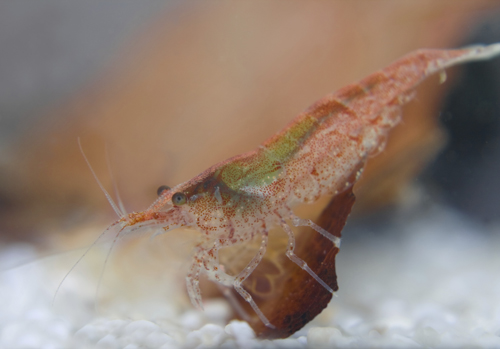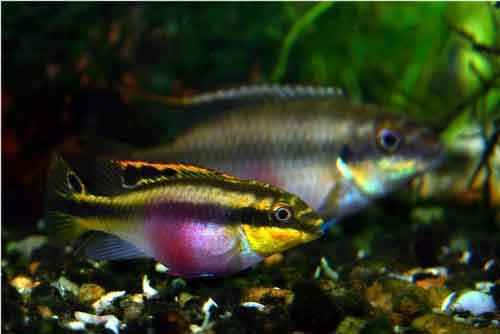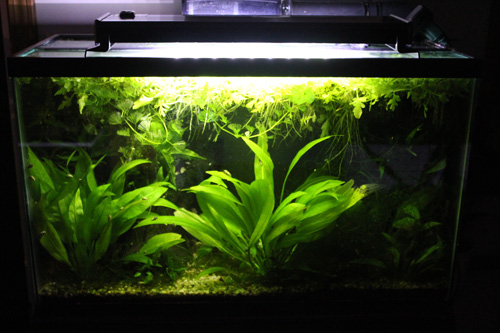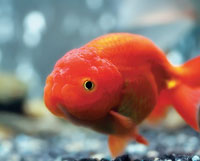
Shrimps are interesting aquatic animals that can be raised alone or together with fish in aquariums. There are various species of shrimp which are kept in tanks.
These include dwarf shrimp, longarm prawns, ghost shrimp, and fan shrimp. The Amano shrimp (Caridina multidentata) is often kept as tank scavengers and algae eaters. One of the main considerations when you are thinking of keeping shrimps and fish together is their compatibility. Some fish species, such as guppies and cichlids, prey on shrimps. Be sure to select which fish species you will keep together with shrimps in a community aquarium.
Shrimps don’t require a large tank. The size of your shrimp tank will depend highly on what you intend to accomplish. A 10-gallon tank is preferred by most hobbyists, however, if you are planning to have a massive colony of shrimps, it is best to start with a large tank.
If this is your first shrimp tank, starting with a smaller one will allow you easier management of your tank while you are still learning the ropes of shrimp keeping. Shrimps need an aquarium with a cover to prevent them from escaping.

A good substrate provides a place for the shrimp to dig and bury themselves. Substrates for shrimp tanks are available in pet shops. Be sure to get a neutral substrate, one that does not contain any chemicals since some species of shrimps are known for their sensitivity to specific chemicals. When putting in the aquarium substrate, start with a bottom layer of gravel, followed by a layer of freshly washed, fine-grained aquarium gravel or river sand. You can also put in a few larger pebbles.
Apart from purifying the water in the tank, an aquarium filter also creates a constant water flow that mimics the shrimp’s natural environment. When choosing a filter for your tank, get one that is effective in both mechanical and biological filtration. Some hobbyists use sponge filters because these are easy to maintain, and are less expensive than other types of filters. With sponge filters, shrimps are not disturbed with a strong water flow and there is no risk of baby shrimps being sucked in the filter.
Since many species of shrimps originate from subtropical climate zones, temperature variations that correspond to the seasons are quite natural, and may even promote breeding success. For tiger, bumblebee, and bee shrimps, the ideal temperature range is between 19 and 25°C (66 – 77°F), while Amano shrimps thrive well between 10 and 30°C (50 – 86°F). On the other hand, tropical cleaner shrimps require a water temperature between 75-79 °F. As you can see, the conditions that are ideal for this species of shrimp are quite narrow in terms of acceptable temperature ranges. Thus, it is extremely important to check these factors daily.
Cold water shrimps share similar care requirements except their requirement for water temperature which is significantly lower, between 54 to 59 °F.
Shrimps can die when temperature inside the tank is too high or too low, thus putting in a heater is necessary in places where seasonal variations are quite distinct particularly during winter. During summer, a cooling fan or chiller may be needed to cool down your shrimp tank. When using a fan, don’t forget to top off the water that is lost through evaporation.
Ornamental Shrimp
Freshwater Shrimp
High oxygen levels in the tank are very important for both reproduction and exuviation (the process where shrimp sheds off its exoskeleton). Stable levels of oxygen in the tank can be achieved by installing an additional pump apart from the tank filter.
If you choose to put in some plants in your shrimp tank, aquarium light is a must. Live plants can help promote a better environment for the aquatic inhabitants. Tank vegetation helps improve water quality by removing ammonia and nitrates. Plants also provide cover and food surface for the shrimp.
Moss comes highly recommended because it holds a lot of microbial flora and fauna that the baby shrimps feed on. Moss does not need any fancy substrate to thrive well. When putting in live plants, you may need to have an additional source of carbon dioxide in your tank. But if you are using moss, anubias, or ferns, there is no need to inject CO2.
Water cycling is extremely important for new tanks. It can take between 2 to 4 weeks to complete a full cycle. To get rid of chlorine, chloramines, and heavy metals, get a good dechlorinator.
Shrimps are very sensitive to the presence of chemical pollutants in water. Thus, tap water should be conditioned before filling the tank. Water conditioners are simply added to tap water to bind heavy metal ions, neutralize toxic substances, and clarify the water.
After water cycling for 3-4 weeks, test water quality parameters such as pH, nitrate, and ammonia using test kits.
 Kribensis Care and Breeding
Kribs are small, colorful cichlids that have become a staple
Kribensis Care and Breeding
Kribs are small, colorful cichlids that have become a staple
 UV Sterilizers and Freshwater Discus Aquariums
Q. I have a 90-gallon freshwater aquarium that is bare-
UV Sterilizers and Freshwater Discus Aquariums
Q. I have a 90-gallon freshwater aquarium that is bare-
 Aquarium Fish Hiding Places
Imagine having to spend an extended period in a room w
Aquarium Fish Hiding Places
Imagine having to spend an extended period in a room w
 Modular LED lighting for freshwater and marine aquariums
Aquarium manufacturers are shifting to LED lighting systems
Modular LED lighting for freshwater and marine aquariums
Aquarium manufacturers are shifting to LED lighting systems
 Finding Fancy Goldfish
Trying to find nice fancy goldfish like this in stores c
Finding Fancy Goldfish
Trying to find nice fancy goldfish like this in stores c
Copyright © 2005-2016 Pet Information All Rights Reserved
Contact us: www162date@outlook.com